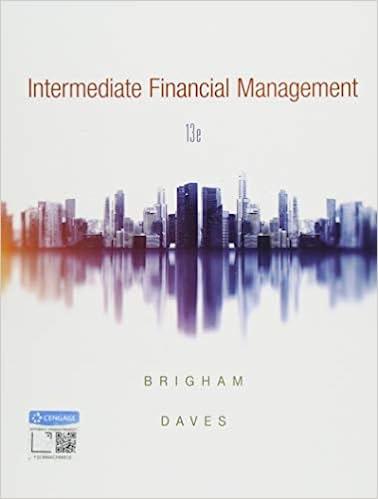Question
1.) In 2017, Eraser Corp had Revenue of $200 million, Cost of Goods Sold of $100 million (this includes Depreciation of $50 million), Sales General
1.) In 2017, Eraser Corp had Revenue of $200 million, Cost of Goods Sold of $100 million (this includes Depreciation of $50 million), Sales General and Admin Expenses of $50 million, and faced a tax rate of 21%. Assume that no money was spent on Capital Expenditures or on additional Net Working Capital. According to our recipe, what should be the after-tax cash flow generated by Eraser Corp in 2017 (in millions)?
2.) Blaze Scooters is considering expanding into a new college town and has the following operating data:
Initial Investment in scooters (year 0): $100,000
Cost of securing permits (assume that permit cost is a tax-deductible expense in year 1): $10,000
Anticipated Revenue: $150,000 for years 1-5.
Depreciation of scooters - straight line down to 0 over 5 years.
Operating expenses (not including Depreciation): $75,000 per year.
Tax Rate: 21%.
Net Working Capital, consisting of cash, spare parts inventory, accounts receivable, and accounts payable: $30,000. Blaze expects to be able to recoup 100% of Net Working if they shut down. Assume that investment in working capital occurs in year 0 at the start of the project.
Scrap value of scooters at the end of 5 years: $20,000. (remember that any capital gains when selling are taxable)
Assume that Blaze makes the necessary investments, operates for 5 years, and then shuts down, selling the scooters for scrap and recouping Net Working Capital. What are their expected after-tax cash flows for year 0 through 5?
Step by Step Solution
There are 3 Steps involved in it
Step: 1

Get Instant Access to Expert-Tailored Solutions
See step-by-step solutions with expert insights and AI powered tools for academic success
Step: 2

Step: 3

Ace Your Homework with AI
Get the answers you need in no time with our AI-driven, step-by-step assistance
Get Started


